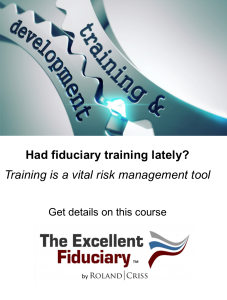 Computerizing Fiduciary Controls is a New Business Reality for ERISA Plans
Computerizing Fiduciary Controls is a New Business Reality for ERISA Plans
Recent changes to ERISA make compliance with its fiduciary rules more challenging than at any time since its introduction in 1974. Many organizations that sponsor ERISA plans lack the needed controls and most do not have the means to document their compliance with ERISA’s fiduciary standards of care. Computerization of the fiduciary function is now essential to maintaining employee confidence and avoiding penalties.
Automation of Fiduciary Functions Solves More than Just Documentation Needs
Most plan sponsors expect their senior executives to assume accountability for their ERISA qualified retirement plans. Yet, they also realize that the biggest pain points in the compliance process — and the biggest opportunities for offering plans rich in features — lie not in the scramble for better documentation, but rather in fundamental areas such as upgraded procedures, testing of practices, monitoring of service providers, and remediation or procedural gaps. That’s where automation comes in.
Going forward, most experts predict that automation will be essential to establishing a sustainable ERISA compliance framework. Processes used by plan sponsors so far are not sustainable in the wake of fee disclosure and conflicts of interest provisions now central to ERISA. Automation of documentation, monitoring, testing, and enforcement are more stable and coherent than in the days when E-mail and Excel spreadsheets and sampling testing were managers’ and finance executives’ main methods of managing compliance. That’s in large part because they enable a repeatable, reliable, and predictable solution, while significantly lowering the cost of compliance.
Automation Moving from Fable to Foundational
At Roland|Criss, which develops fiduciary compliance systems for organizations that sponsor 401(k), 403(b), ESOPs, and defined benefit plans, we recognize that the responsibility for process documentation, testing, and any remediation or enhancement activities resides with responsible plan fiduciaries. That person is most often the plan sponsor’s CFO or senior human resources executive. Roland|Criss has automated the steps that it takes to satisfy ERISA’s fiduciary standards and offers the solution under FiduciaryGRC™.
FiduciaryGRC contains preventative automated controls to “turn on” key switches in its cloud-based platform that drive down the number of manual touch points and labor-intensive controls detectors. The benefits are reduced costs for the plan’s sponsor, constantly monitored expenses paid by plan participants, and a risk management system that operates in lock step with ERISA.
Ask Roland|Criss how FiduciaryGRC can help your organization.




